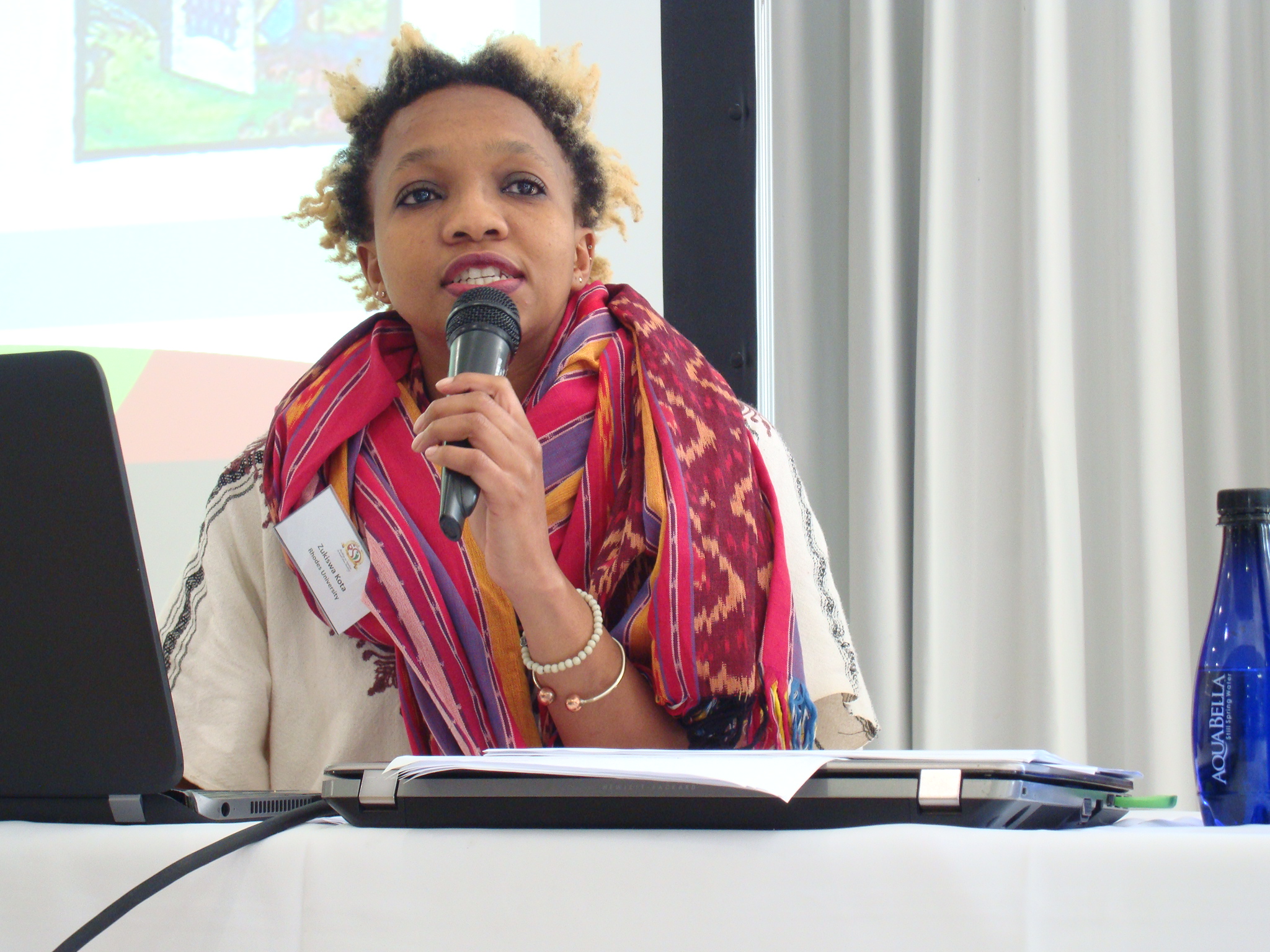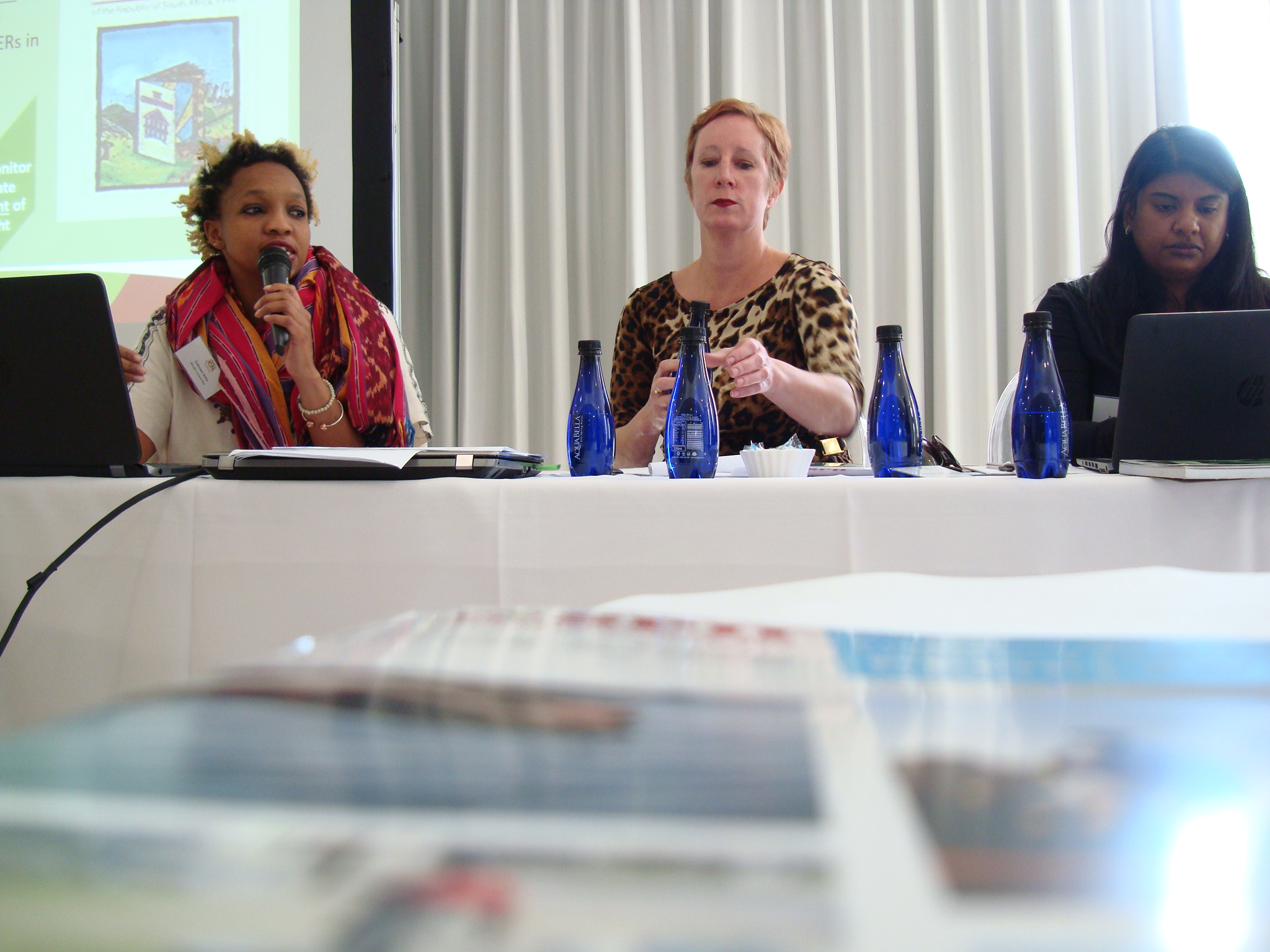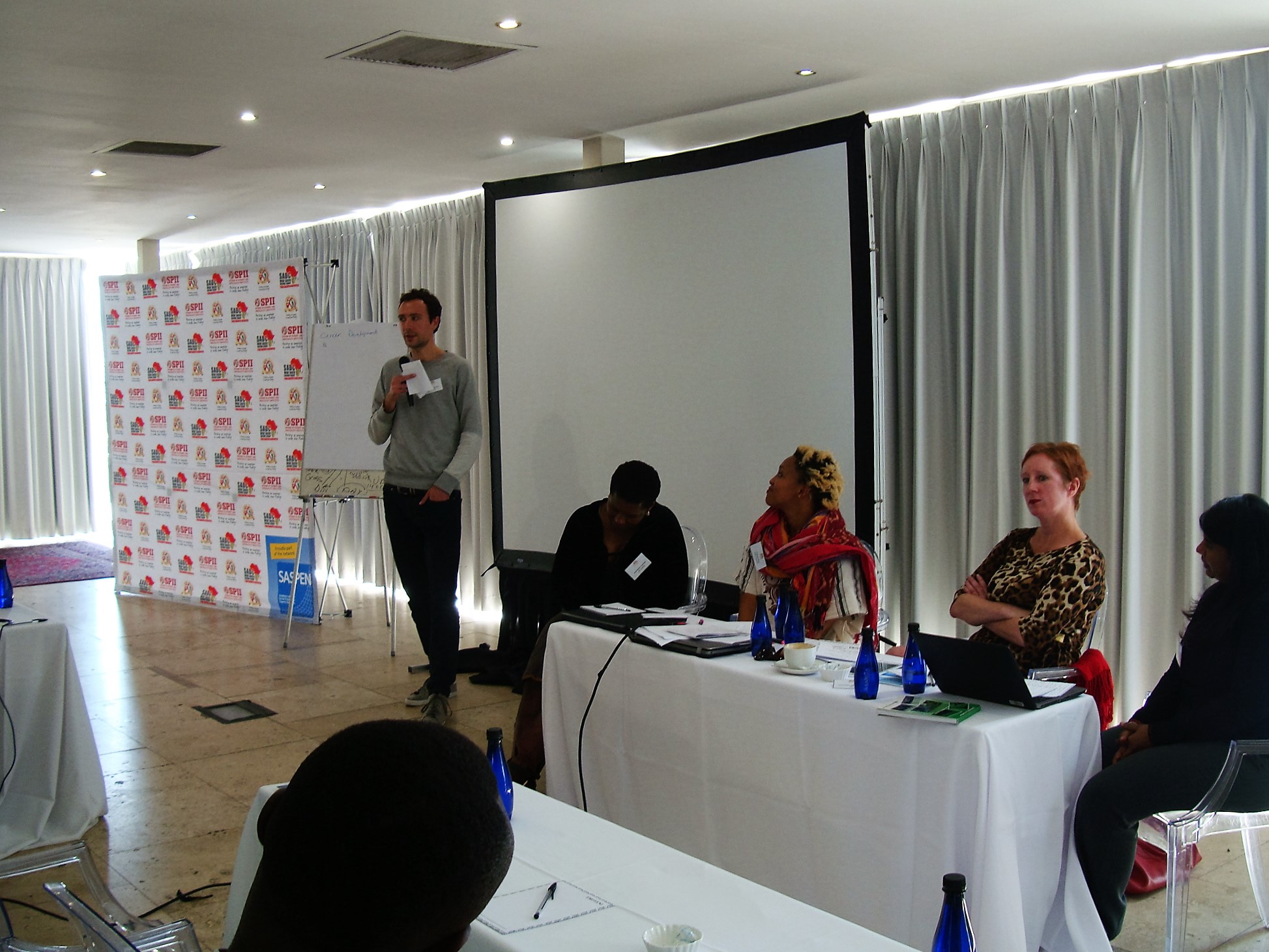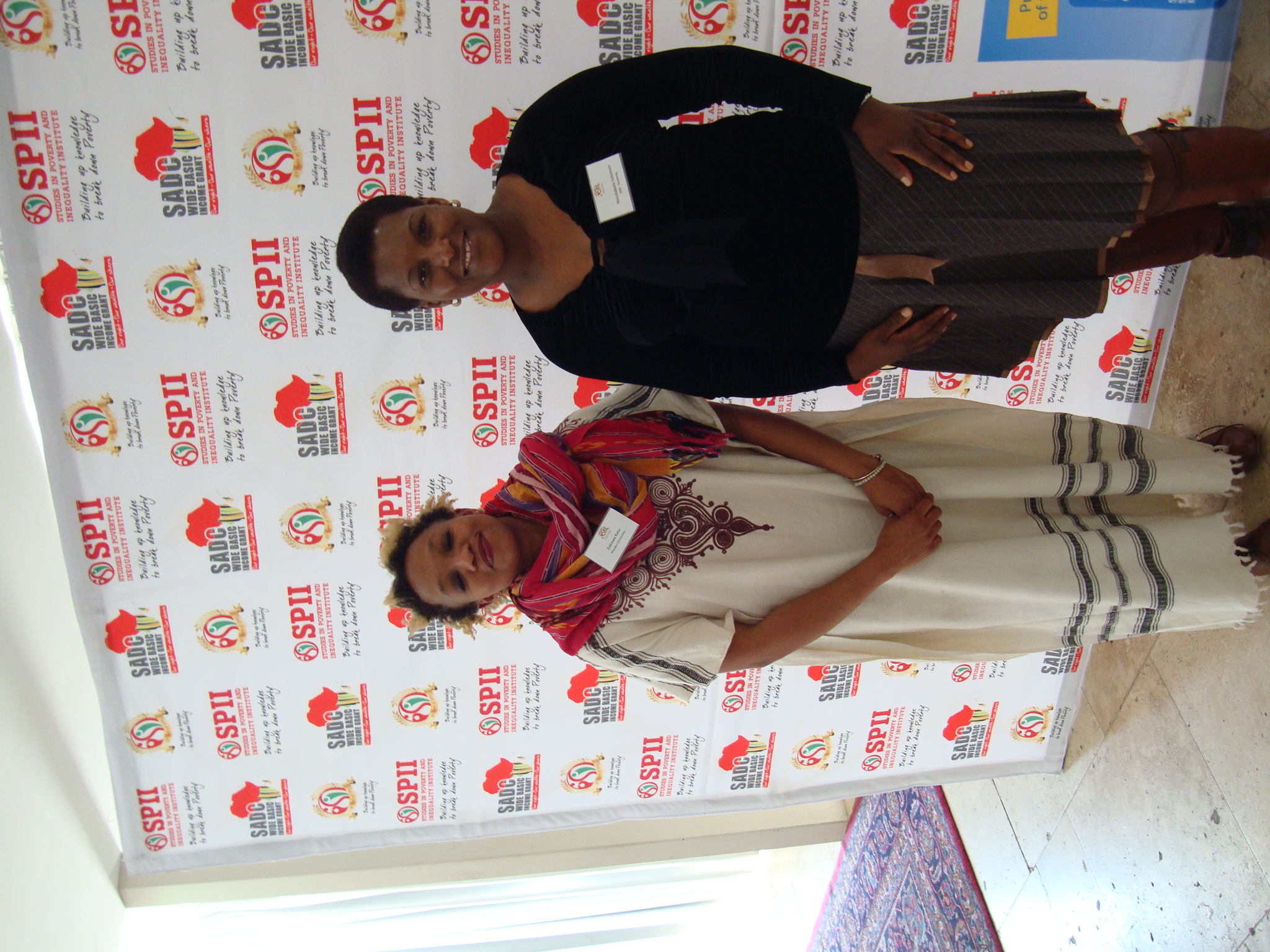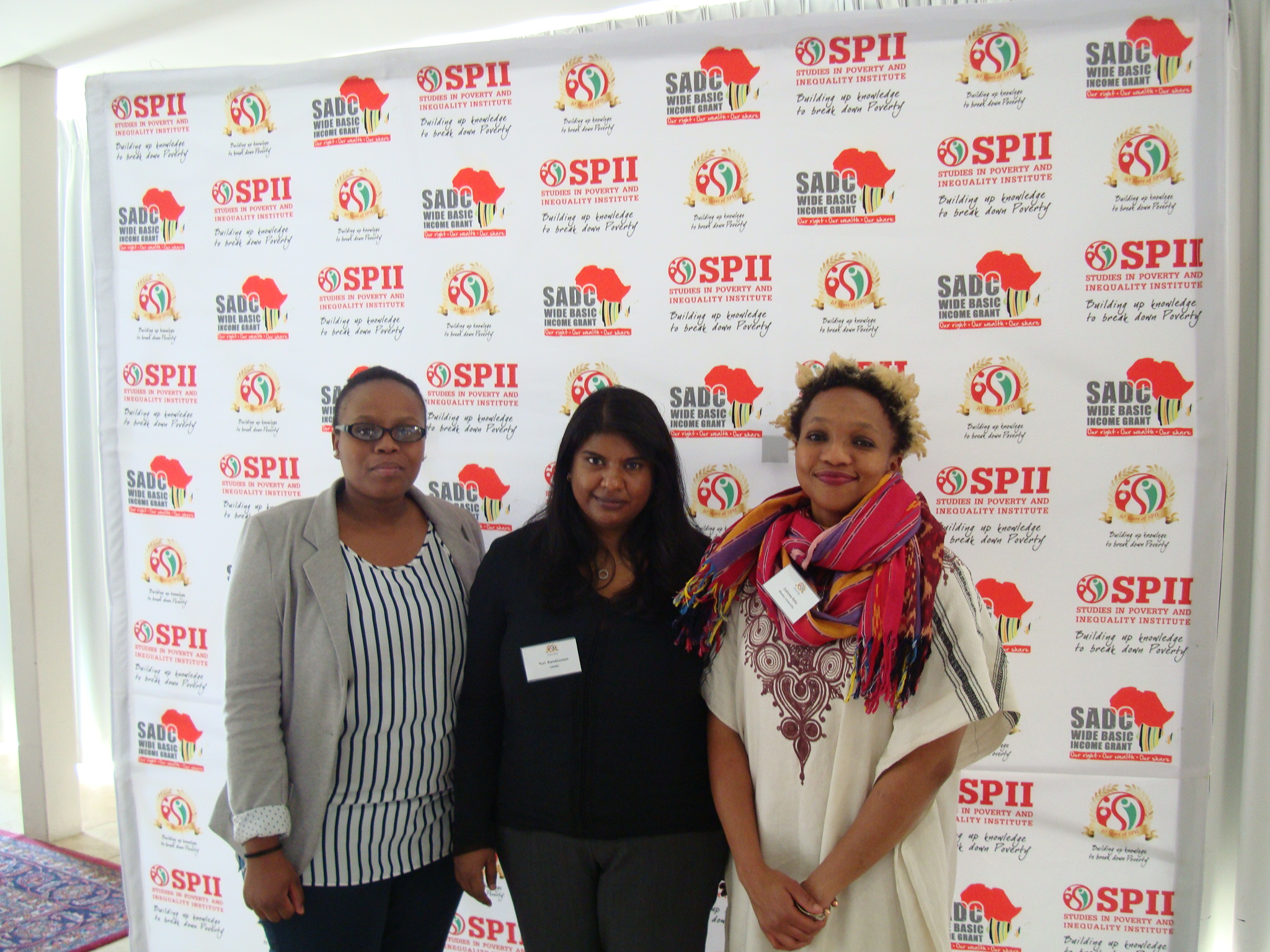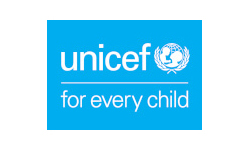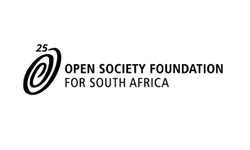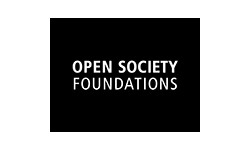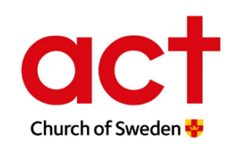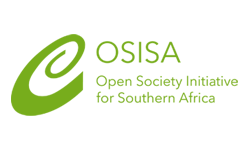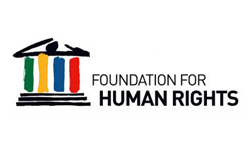The Right to a Healthy Environment
Realising the Right to a Healthy Environment
Through a combination of policy and budget analysis and the evaluation of statistical impact indicators – this paper aims to provide a framework to interrogate the South African government’s progress towards fulfilling the right to a healthy environment as provided in Section 24 of the Constitution.
The budget analysis section of the paper focusses primarily on the resource allocation and expenditure of the Department of Environmental Affairs and the efficacy and efficiency with which public funds are utilised. In addition to raising questions around the adequacy of financial resources allocated to address this right, the report proposes some steps that can be taken by key decision-makers to address shortcomings within the overall public resource management cycle.
Included in this analysis is an exploration of manner in which policy making to expand access to socio-economic rights in fact aligns with Constitutional obligations and jurisprudential guidance handed down by the Constitutional Court.
The paper aims to provide useful information for policy makers, those that exercise oversight over the executive, including Parliament, the DPME and Chapter Nine institutions, public interest litigants, and broader civil society.
The working paper was updated in 2018 to reflect the latest figures. Our updated paper, Working Paper No 19 - Realising the right to a healthy environment.
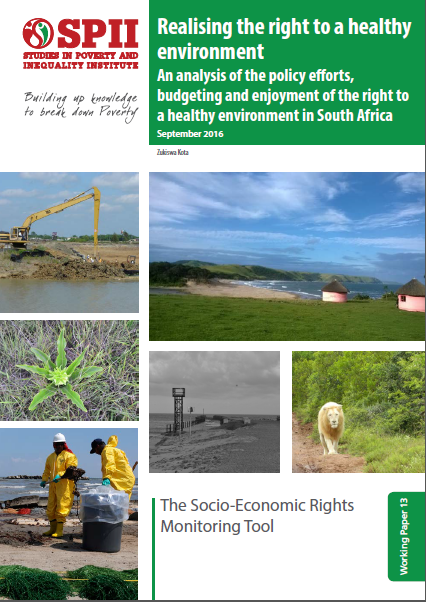
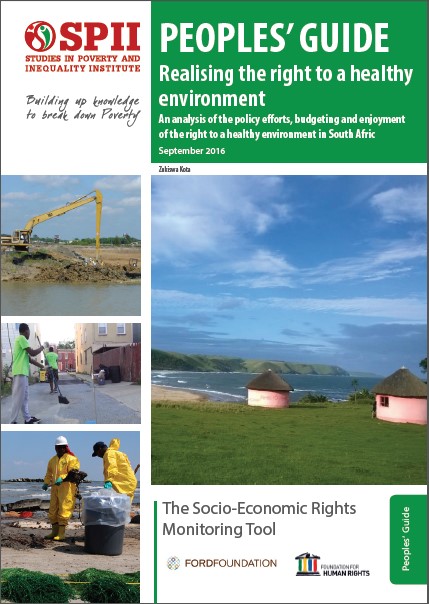
Realising the Right to a Healthy Environment People’s Guide
Through a combination of policy and budget analysis and the evaluation of statistical impact indicators – this paper aims to provide a framework to interrogate the South African government’s progress towards fulfilling the right to a healthy environment as provided in Section 24 of the Constitution. The budget analysis section of the paper focusses primarily on the resource allocation and expenditure of the Department of Environmental Affairs and the efficacy and efficiency with which public funds are utilised.
In addition to raising questions around the adequacy of financial resources allocated to address this right, the report proposes some steps that can be taken by key decision-makers to address shortcomings within the overall public resource management cycle.
Included in this analysis is an exploration of manner in which policy making to expand access to socio-economic rights in fact aligns with Constitutional obligations and jurisprudential guidance handed down by the Constitutional Court. The paper aims to provide useful information for policy makers, those that exercise oversight over the executive, including Parliament, the DPME and Chapter Nine institutions, public interest litigants, and broader civil society.

